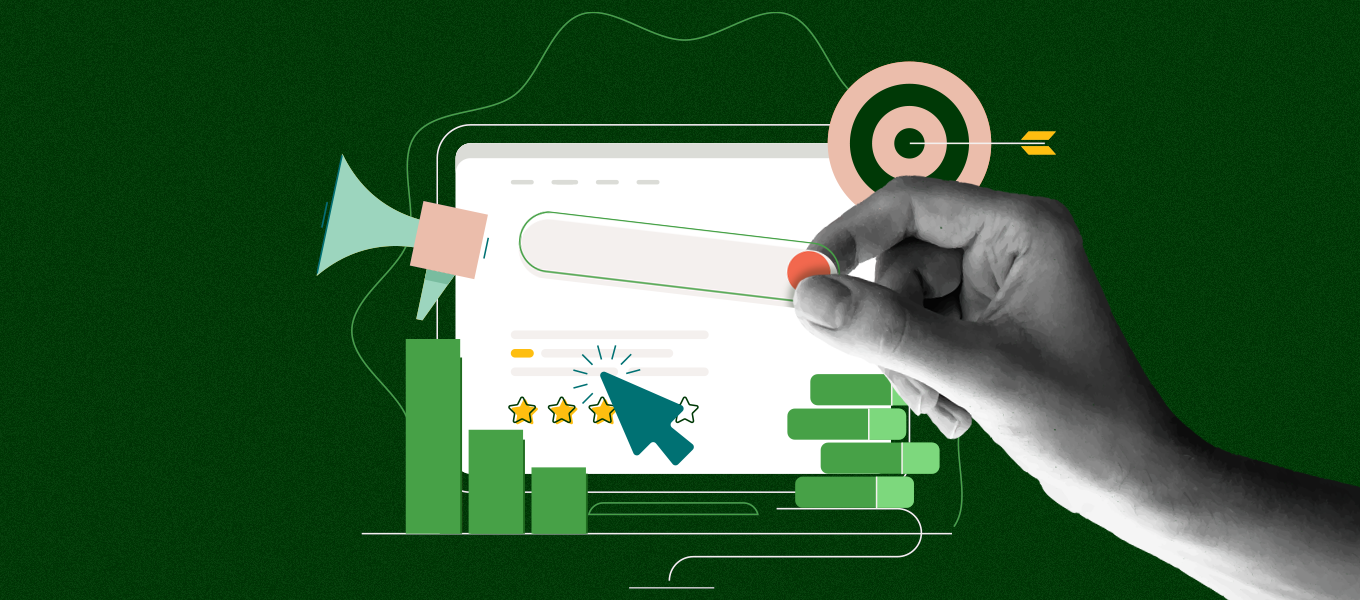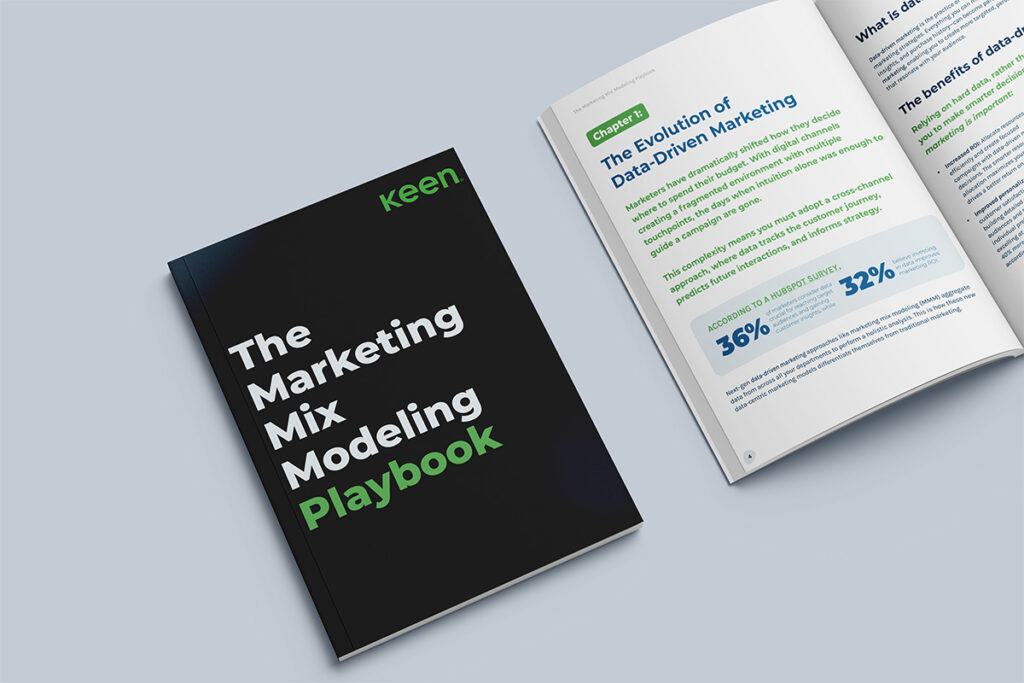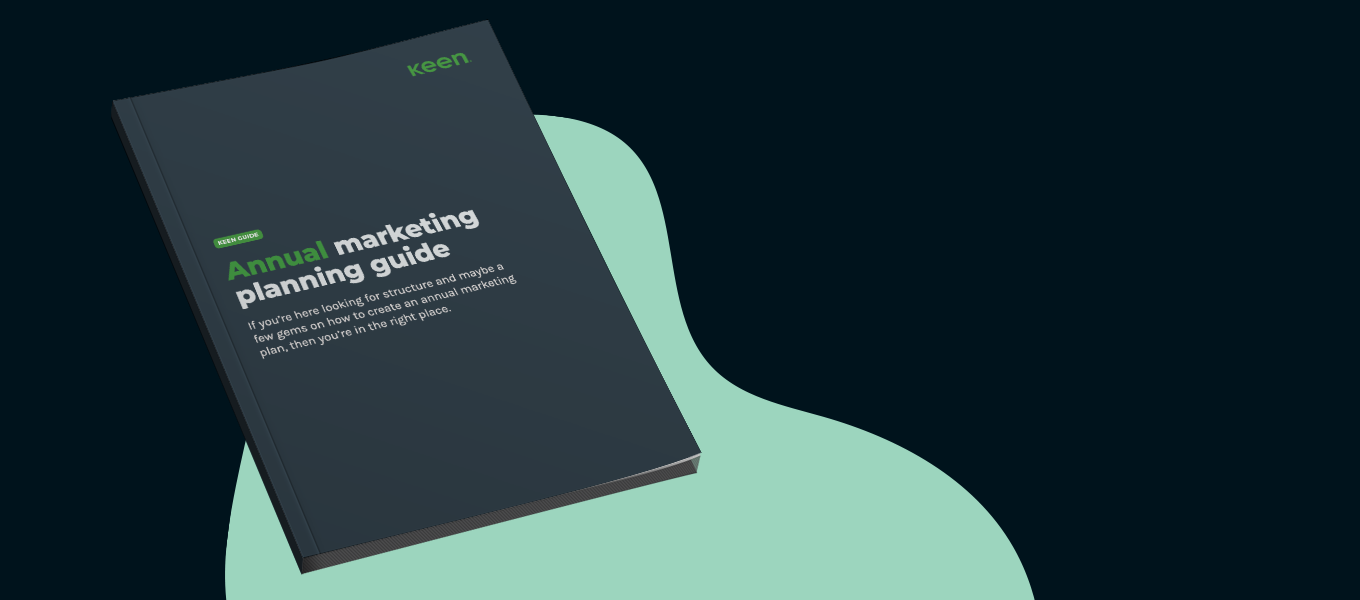Businesses often struggle with fragmented marketing efforts that fail to guide customers smoothly through the purchasing process. Imagine how frustrating it would be for your audience if they clicked on a compelling social media ad but then received no follow-up communication to guide them toward making a purchase. Without nurturing those leads, they might lose interest or forget about your brand entirely, compromising the effectiveness of your marketing efforts.
A full-funnel marketing strategy solves the issue of fragmented approaches by consistently engaging customers throughout the entire sales process.
Discover how to take advantage of this model to increase engagement, boost conversions, and enhance your marketing return on investment (ROI).
What is a full-funnel marketing strategy?
A full-funnel marketing strategy is an approach that targets customers at each stage of their buying journey, from discovery to conversion. The goal is to make your initiatives more effective by ensuring that the right message reaches potential customers when they need it most.
Picture a company that attracts the audience to its website through comprehensive content, helps prospects evaluate their options with customer reviews, and shares competitive offers to encourage sales. Integrating these initiatives ensures a smooth journey from initial interest to becoming a customer. This is what a strategy that covers the entire customer lifecycle aims to achieve.
The funnel typically has three stages—awareness (top), consideration (middle), and conversion (bottom). Let’s break down the full-funnel marketing tactics for each stage:
| Stage of the marketing funnel | Definition | Marketing initiatives |
| 1. Top-of-funnel (TOFU) | The awareness stage is when potential customers discover your brand by researching related topics. Capture their attention with valuable, educational content that addresses challenges and subtly introduces your brand without a hard sell. | Offer free resources to demonstrate expertise, leverage social media to engage the audience, and deliver targeted ads to reach decision-makers on relevant platforms. |
| 2. Middle-of-funnel (MOFU) | The consideration stage is when potential customers compare solutions for their needs. Showcase your expertise and unique value to nurture leads and position your brand as the top choice. | Create personalized email campaigns to nurture leads and develop detailed content such as guides, webinars, whitepapers, and eBooks to show how your products meet customer needs. |
| 3. Bottom-of-funnel (BOFU) | The conversion stage is when potential customers are ready to act. Highlight your brand’s value, offer personalized deals, and provide clear calls to action to close the sale while addressing any remaining concerns. | Provide free trials to showcase your product’s benefits, develop case studies and video tutorials to illustrate practical advantages, and implement lead scoring to prioritize high-potential prospects for effective resource allocation. |
Keep learning: Understand the difference between marketing strategy and marketing mix
Steps to building a full-funnel strategy in marketing
Building a full-funnel marketing strategy involves these six steps:
1. Understand your audience
Research and segment your target audience to personalize your messaging to their specific preferences and needs at each stage. This process involves:
- Gathering data: Collect information from customer surveys, social media insights, and website analytics, focusing on demographics, behaviors, and purchasing patterns.
- Identifying pain points: Analyze customer feedback, reviews, and support inquiries to understand common challenges or needs your product or service can solve.
- Creating distinct groups: Divide your customers based on shared characteristics, such as buying motivations and stages of the funnel (TOFU, MOFU, BOFU).
- Defining persona profiles: Develop detailed profiles for each segment, including a fictional name, background, goals, challenges, and how they interact with your brand.
- Validating and refining: Test these personas against actual customer data and refine them as needed to ensure accuracy.
By applying these insights, you can adjust your funnel to fit your audience’s preferences. For example, if your data shows that your audience prefers video content, you might use short, engaging videos to build awareness. Later in the funnel, during consideration, you could provide product demos to nurture leads and move them toward conversion.
2. Define your goals and objectives
Align your funnel with overarching business goals, like increasing brand visibility or conversion. For example, if the goal is to enhance awareness, set specific key performance indicators (KPIs) during this stage, such as raising website traffic or increasing social media followers.
Clearly defined goals ensure that each stage of your marketing funnel is geared towards achieving your broader objectives, providing marketing metrics to track and optimize your progress.
3. Integrate marketing automation tools
According to Ascend2, 44% of marketers have already automated parts of their customer journeys. With automation, you can use data to optimize underperforming stages of the funnel and allocate resources to capitalize on high-performing areas.
For instance, if your awareness stage shows low engagement, automation tools can trigger personalized email campaigns based on user behavior, targeting specific customer segments with relevant content.
Also, automation can track and analyze which channels drive sales funnel conversions, allowing you to shift resources toward successful paid search or social media ads and ensuring your efforts focus on the most impactful areas.
With Keen, you leverage AI-powered marketing mix modeling (MMM) to connect investment data in real time and simulate scenarios that help you understand which funnel strategies yield the best results. This way, you can streamline lead scoring, email marketing, retargeting, and more.
4. Align sales and marketing
Coordinate sales and marketing teams by setting shared goals, consistent messaging, and clear lead handoff processes. For example, when marketing identifies promising leads, sales should have a plan to follow up. Sales can also provide feedback on lead quality and conversion challenges, helping to improve your funnel strategy in marketing.
AI-powered data analysis can also transform your marketing strategies by offering valuable insights into lead behavior and campaign performance. In fact, AI has become such an integral tool in marketing that Salesforce reports that 75% of marketers are already exploring or implementing the technology.
With real-time optimization through quick data processing, scenario-based planning, and predictive analysis, you can adapt to emerging trends and new opportunities.
5. Optimize and iterate
Regularly analyzing the performance of your full-funnel marketing strategy helps identify areas for improvement. Progress reviews might reveal underperforming CTAs or landing pages due to poor visibility or generic messaging. To tackle this issue, run A/B tests comparing variations to identify the most effective elements.
Use these AI-driven insights to refine your content marketing initiatives. For example, you can increase resources for high-converting stages, allocating more marketing budget to retargeting ads in the conversion phase. If this phase is particularly effective, replicate successful elements like personalized messaging or targeted offers in earlier stages, such as awareness or consideration, to improve overall performance across the funnel.
6. Foster customer relationships
A comprehensive full-funnel marketing approach encompasses both pre- and post-purchase stages, ensuring that customers feel valued and supported throughout their journey.
To build loyalty and encourage advocacy, focus on engaging customers post-purchase through personalized communication. For instance, you could start an email campaign that sends tailored messages to customers based on their specific interests and behaviors. You can also invite your customers to share their positive experiences through case studies and online reviews.
Make the most out of your marketing funnel strategy with AI
Artificial intelligence can pinpoint the most effective initiatives at each stage of the customer journey, allowing you to optimize your marketing spending by redirecting resources to the most promising areas. AI analyzes vast amounts of data from multiple sources, such as user behavior and campaign performance, by identifying patterns and correlations that indicate which strategies and channels drive the best results at each stage of the customer journey.
With this data, you can optimize targeting, messaging, and performance. No wonder HubSpot reports that 26% of marketers see an improvement in their ROI by leveraging data. For instance, if data found through AI shows that mid-funnel nurturing tactics drive higher conversion rates, you can adjust your strategy to invest more in these activities.
Optimize your full-funnel marketing tactics with Keen
Keen uses machine learning and advanced statistical techniques to identify patterns and trends in your marketing performance. By analyzing data across multiple channels, Keen enables marketers to understand how media spend impacts various stages of the funnel.
Our AI-driven MMM software platform also helps you determine the right mix of top and bottom funnel tactics. Strategic budget allocation, optimization of the marketing mix, and accurate prediction of investment impact ultimately drive growth and maximize ROI.
Request a demo and see how Keen empowers marketers to enhance their full-funnel marketing strategy.





